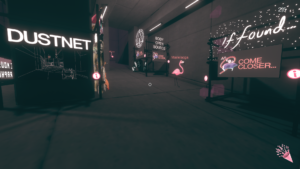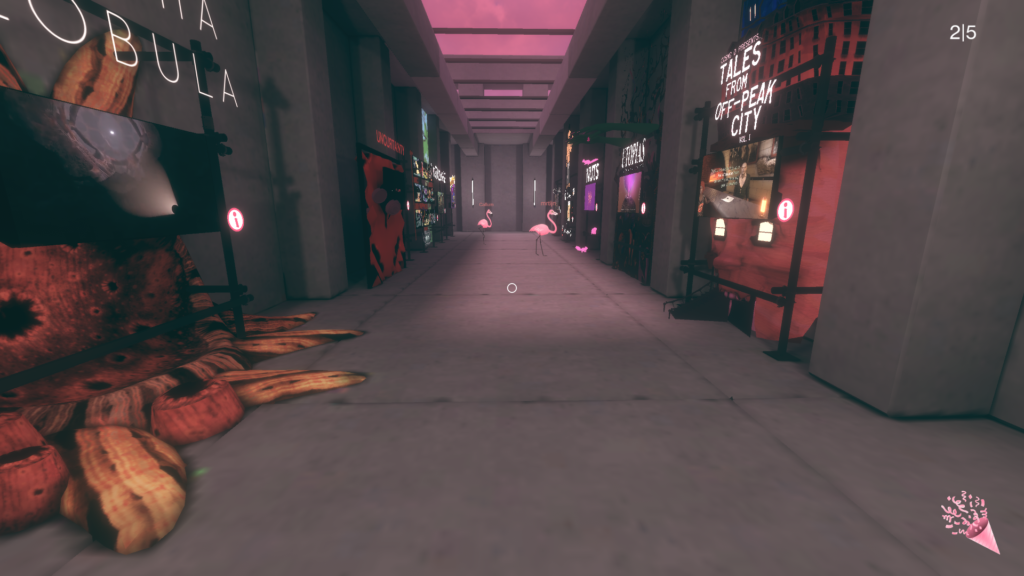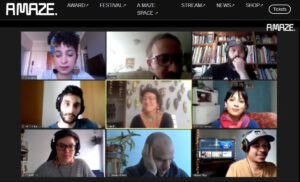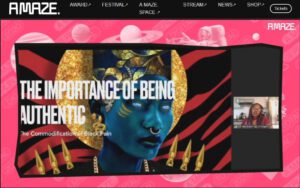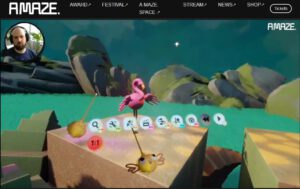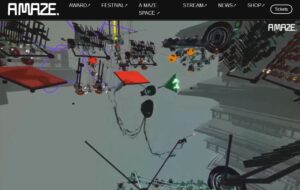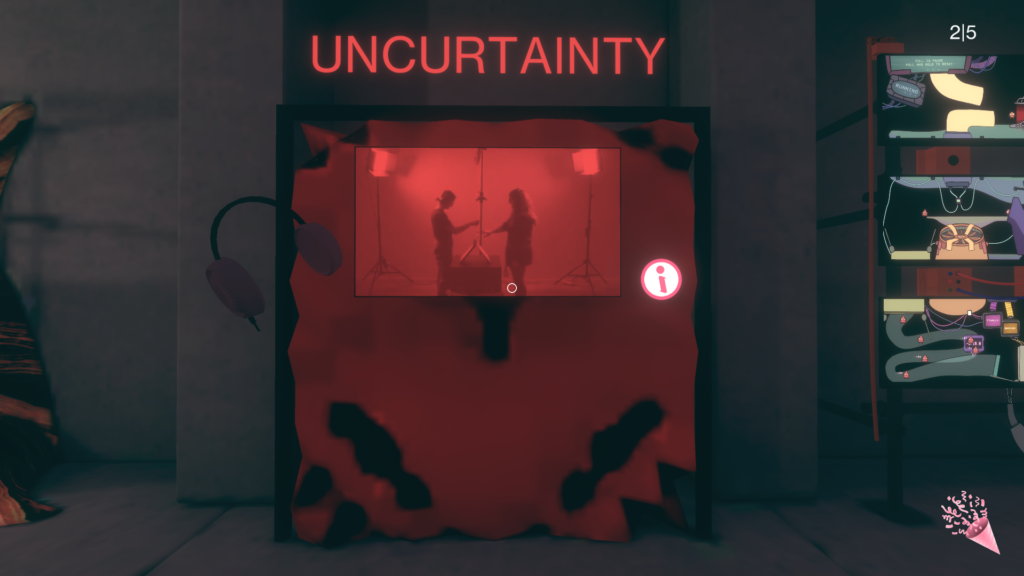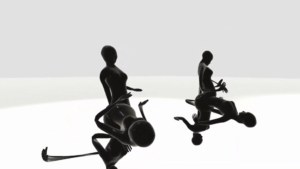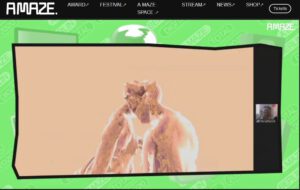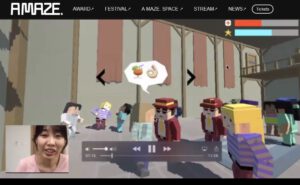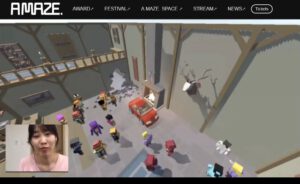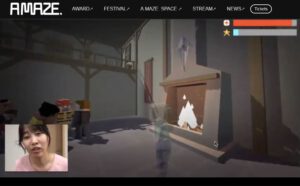A Maze, the annual experimental festival of interactive arts in Berlin suffered quite some setbacks for the preparation of this year’s issue. First, a Kickstarter initiative had to make sure that the festival is financially viable. Then the pandemic forced the festival’s overarching event platform Berlin Gamesweek into cancellation. Therefore, A Maze went totally digital for this year’s edition – and this bold move made my days and saved our souls!
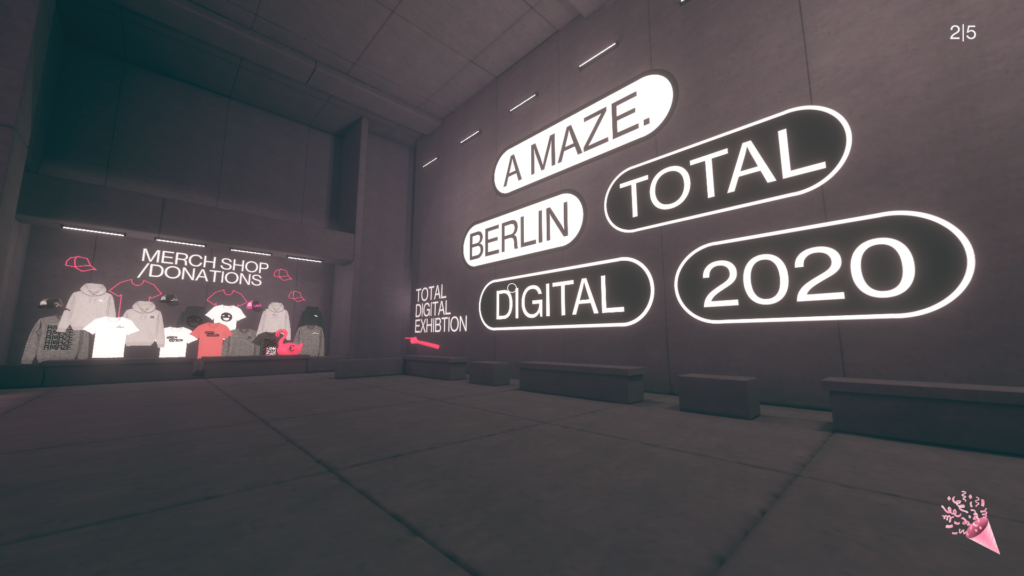
The exhibition space could be accessed in a multiplayer online world which had to be downloaded in a web application before. Visitors were represented as pink flamingo avatars able to perform the most necessary mechanics for social interaction – like kicking a water melon around or clicking on sponsored premium beer cans for a virtual sip!
The virtual exhibition was organized like a real world art space: you could approach the art works in different galleries to read more info or watch a video documentation. Web and mobile art works could be played directly in the app. Most of the games could be downloaded for demo play-throughs later on. The festival maintained the well established structure with the interactive exhibition, an open cinema venue, a web exhibition of the ‘Devolution’ series, video streams with lectures and panels, webinar workshops, an online award ceremony, a club for dancing with flamingos, multiplayer online performances, VR experiences, and a vivid and inspiring chat community.
Naturally, this totally digital format could not entirely replace all aspects of a real world event. Interactive installations with innovative interfaces are hardly approachable in video documentations. Live performances may also be less authentic in video transmissions than on a real stage. However, the conference streaming could demonstrate some advantages of the digital realization. I really appreciated the daily Zoom conferences dedicated to artists from different continents. Every day focused on another part of the world: Asian indie game productions, African media art exhibitions, Latin American digital politics. What a mind opening tour around the world in 80 hours!
Besides politics and art, music was one of the main topics of the show. Every night local and international music bands performed in video live streams. PlayStation game hit Dreams offered a jam session in user created music making. And the electronic music toolbox PatchXR presented a whole range of exciting spatial sound compositions as a result of their VR competition in cooperation with the festival.
VR certainly has some disadvantages when framed into flatcreen videos only. But the festival managed to offer multiuser VR experiences as live performances for those equipped with a headset at home. You could download an app to join the performers live on the virtual stage, while those without headset could follow the live broadcasting on the internet.
Virtual body representation and interpersonal haptics was another big topic for the art installations. VR served as a medium of self reflection when real body movements were mirrored in abstract forms of intimate sensations – a new level of intimacy in times of enforced social distancing in the real world.
The most heartbreaking art work for me was a social VR multiplayer game where you are challenged with social survival strategies in the role of a wallflower: you could either win a friend and escape into splendid isolation from society, or you could lose your existance by becoming transparent among all others and vanish into a social specter.
Obviously, vanishing was no option for the A Maze festival, despite all social, political or economical obstructions in the making. The digitization of this fruitful and aspiring interaction platform was entirely successful. The result is an expansion of the festival’s local art niche into a generally accessible showcase of genuine creativity – all over the world.

